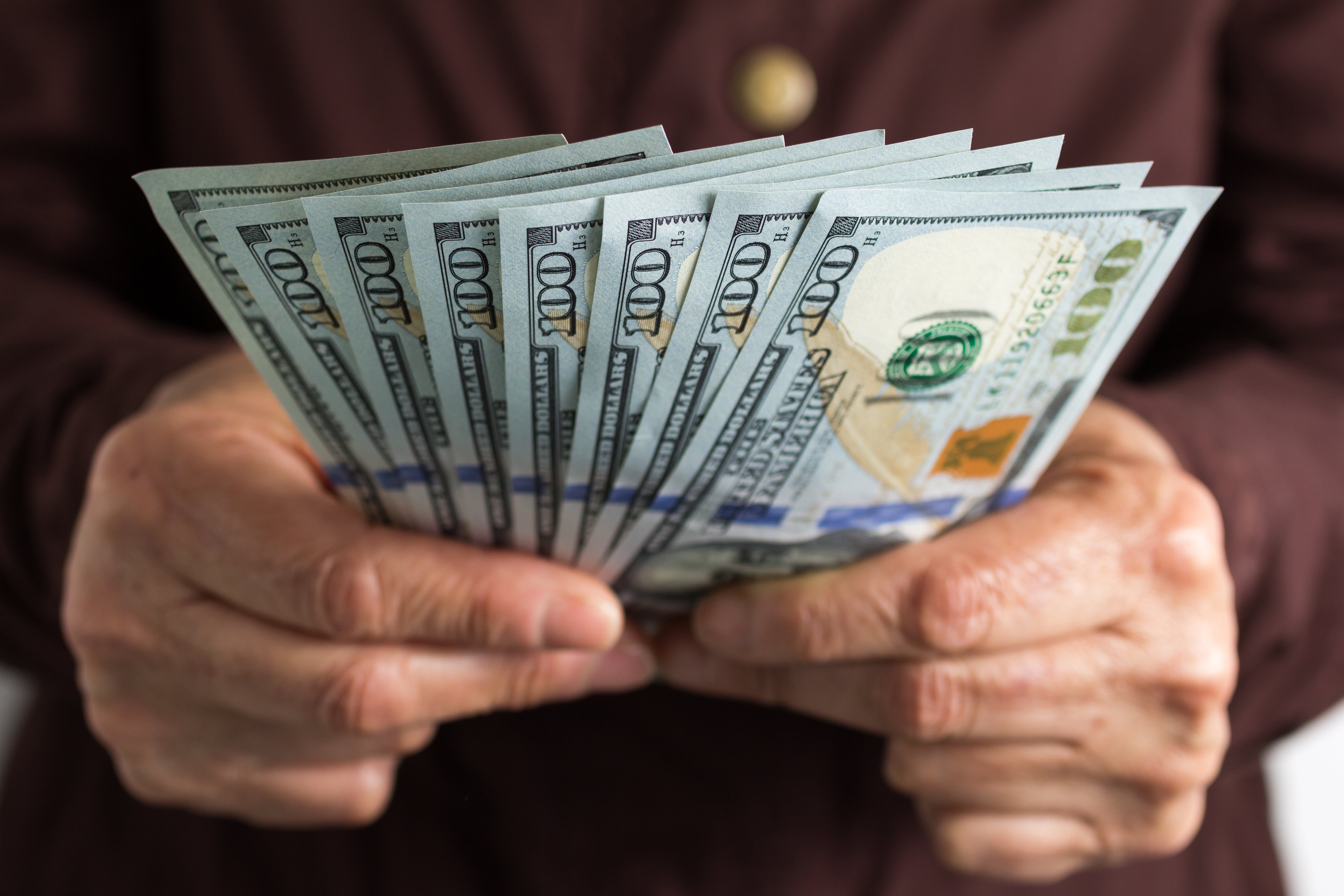Break out the birthday candles, because the bull market recently turned eight years old. Despite recessions being a normal component of the economic cycle, all three U.S. indexes have been practically unstoppable since March 2009. The Dow Jones Industrial Average, Nasdaq Composite, and S&P 500 (^GSPC +0.67%) have all recently hit multiple all-time highs.
However, millionaires aren't having any of it.

Image source: Getty Images.
A growing number of millionaires aren't willing to invest their money
According to the Spectrem Millionaire Investor Confidence Index, which measures confidence in the U.S. economy and stock markets among households with more than $1 million in assets, millionaires' confidence tumbled by 17 points in May from the prior month, representing the biggest month-to-month plunge on record. Per the survey, 39% of surveyed millionaires noted that they had no intention of investing in the coming month (June), which was the highest percentage since Dec. 2013. This is just a one-month snapshot of millionaires' opinions on investing -- but it's nonetheless pretty telling.
Why are millionaires suddenly getting cold feet when it comes to investing? The top answer offered by the survey was the tumultuous U.S. political environment.
Millionaires, who do comprise a good chunk of the investable assets in the stock market, have clear concerns about the future of the American Health Care Act, individual and corporate tax reform, and the potential for armed conflict with North Korea. Quite a few pundits had figured that a Republican-led Congress would pave the way for healthcare and tax reform, but President Trump and his peers in Washington are discovering that change is much tougher than advertised. Without tax reform passing in 2017, expectations for corporate growth may need to be revised lower.
For those who may not recall, President Trump had been pushing for a 15% corporate income tax rate during his campaign, which would be less than half of the peak rate of 35% now.
But the Spectrem analysis overlooks one key point: millionaires are fallible, like anyone else.

Image source: Getty Images.
Surprise, millionaires aren't always right
As noted by CNBC, the last time the percentage of millionaires who didn't want to invest was as high as it was last month was Dec. 2013. However, since Dec. 2013 the broad-based S&P 500 has increased by 35%! Millionaires who chose not to invest would have missed out on some pretty sizable gains over the past three years and change. In fact, the S&P 500 didn't even undergo what could be quantified as a "stock correction" until August 2015, meaning millionaires were more than a year-and-a-half early in their prediction of a market top based on the monthly survey.
Data compiled last year by J.P. Morgan Asset Management pretty decisively shows that buying high-quality stocks and hanging onto them for long periods of time is your best bet for real wealth creation. In other words, put your political and emotional fears on the backburner and allow great companies that have stood the test of time to do their thing.
Per J.P. Morgan Asset Management, an investor that purchased the into the S&P 500 on Jan. 3, 1995 and held for 20 years, through Dec. 31, 2014, would have made a cool 555%, or 9.9% on an annualized basis. You'll note this 9.9% would have left the inflation rate in the dust and generated something on the order of 7% to 8% real-money growth each year. Even better, these gains were realized through the dot-com bubble and Great Recession, which saw the S&P 500 lose 50% and 57%, respectively, at its worst.
What would have happened had this investor missed even a few days by trying to "time the market?" According to the analysis, missing just the 10 best days would have more than halved your returns, and missing out on a little more than 30 of the S&P 500's best days over this 5,000+ trading-day period would have cancelled out all 555%! And if you think that sitting on the sidelines would have allowed you to miss some of the stock market's big moves lower, keep in mind that around half of its best days occurred within two weeks of its worst days. Timing the market just isn't possible over the long run.

Image source: Getty Images.
This trend is always your friend
Should you need even more evidence that buy-and-hold works, look no further than the long-term trend in the S&P 500.
According to Yardeni Research, the S&P 500 has undergone 35 stock market corrections of at least 10%, when rounded, since 1950 -- essentially one every two years if we're averaging. Yet, amazingly, each and every single one of these corrections was put in the rearview mirror by a bull market rally within a matter of weeks, months, or in rarer cases years. To reiterate, 35 times out of 35 the stock market has overcome the adversity caused by a recession, or investors' fears and emotions, to eventually head higher and generate money for long-term investors. You would seriously struggle to find better odds than 35-for-35!
Thus, while skepticism among millionaires is rising, their decision to stay on the sidelines will probably turn out to be a poor one when looking back five, 10, or 20 years from now. Stick to your game plan and invest with regularity regardless of where the major U.S. indexes are valued, and chances are you'll be handsomely rewarded.






